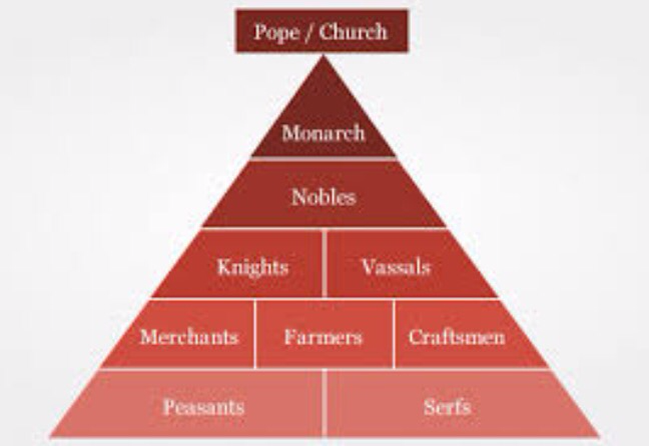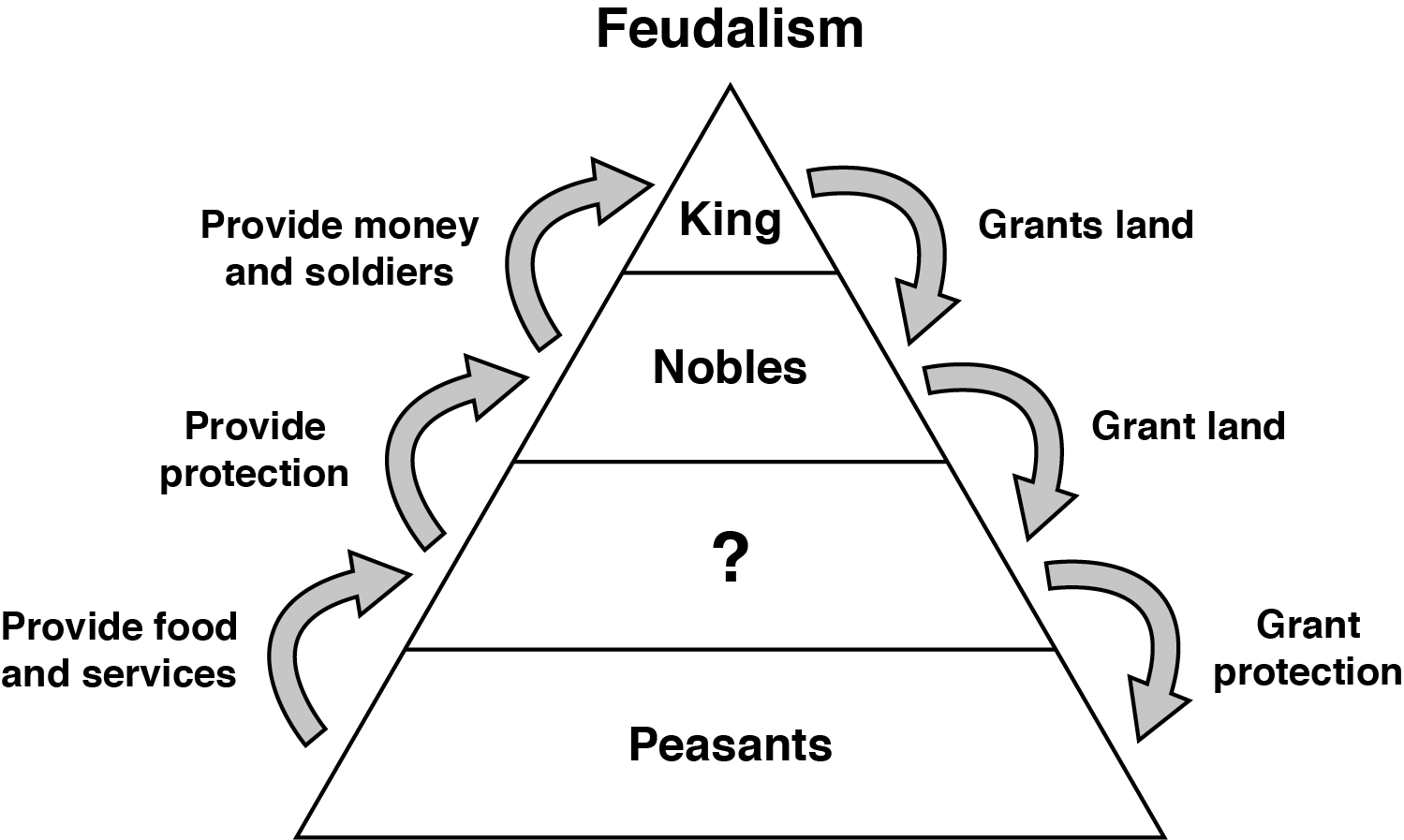

At the top was the king while the knight or chevalier was found at the bottom. Some historians note that the feudal system was like a pyramid. By the 9th and into the 10th Century, those relationships governed detailed obligations, often over-lapping between various lords, and defined by property, law, and inheritance. Historian Steven Ozment states that, “As large numbers populated the countryside, there evolved that peculiar fusion of Germanic, Roman, and Christian practices that we speak of today as “feudal society.’” Feudalism represented the relationship between lord and vassal. But historical research demonstrated that the presuppositions governing the use of the term dark ages were false: Western Europe in the Early Middle Ages did experience a degree of learning trade had not ceased and law prevailed – albeit a legal system influenced by the Church, the barbarians, and scraps of Roman law. In rudimentary form, feudalism was a part of those dark ages. Hence, feudalism cannot be properly understood simply as a generalization or through the prism of independent historiography focusing solely on one aspect of the system.Ī partially relevant example might be the discarded use of the term “Dark Ages” to label the period of the Early Middle Ages. Attempting to Define the Feudal “System”įeudalism in France was different from feudalism in England, and this, according to medieval historians, may account for the eventual emergence of societies tied to different concepts of law, social relationships, and royal power. The notion of a feudal lord and his vassals, for example, is part of that overall system, although the specifics beyond generalizing must account for geographic differences as well as other factors. The so-called “feudal society,” however, can refer to various elements of that transformation period, including social relationships, the economic and legal systems, and the impact of Christian influences. In the next section, we'll learn about how boys became knights.Feudalism, as a generalization, describes those forces in Western Europe during a period of transformation following the dissolution of the Roman Empire.

The path to knighthood started when a boy was very young - official training usually began around age 7.
Impact of feudalism in the middle ages professional#
A knight could make a fortune either by a grant of land from a king or by being a paid professional in service to a lord. So, it was an appealing means for a younger son of a lord to advance himself. Knighthood was not an inherited position - it had to be earned. Knights were members of the gentry in that they held a place in society above the peasants, but they weren't necessarily members of the noble ruling classes or royalty. In fact, nobles often warred amongst themselves over territories.įeudalism did offer a means for a person to advance himself within society through military service and knighthood. One drawback to this system was that the nobles were very powerful because they controlled the armies. Each lord or vassal raised an army to defend his fief and to serve the king as needed.

Fiefs - and the obligation to serve the king - were inherited by the eldest son of the ruling nobleman.įeudalism allowed large territories to be governed in the absence of a central government. The peasants were bound to the land, so it was in the vassal's interest to protect them from invaders. Peasants, or serfs, farmed the land and provided the vassal or lord with wealth in the form of food and products. In return, the lord provided the knight with lodging, food, armor, weapons, horses and money. Many knights were professional warriors who served in the lord's army. The king could also grant fiefs to vassals (knights) in exchange for military service. The king granted fiefs (portions of land) to nobles (lords or barons) in return for loyalty, protection and service. In feudalism, the king owned all of the land. To control such a large territory, Charlemagne instituted a feudal system of government. The Frankish tribes established control over vast territories, and one Frankish king, Charlemagne (Charles the Great) ruled a large chunk of Europe - from northern Spain and Italy through France, Germany and Poland. Numerous tribes fought for domination over territories, but there were no central governments or national armies. The French School/The Bridgeman Art Library/ Getty ImagesĪfter the fall of the Roman Empire, Western Europe had no countries.


 0 kommentar(er)
0 kommentar(er)
